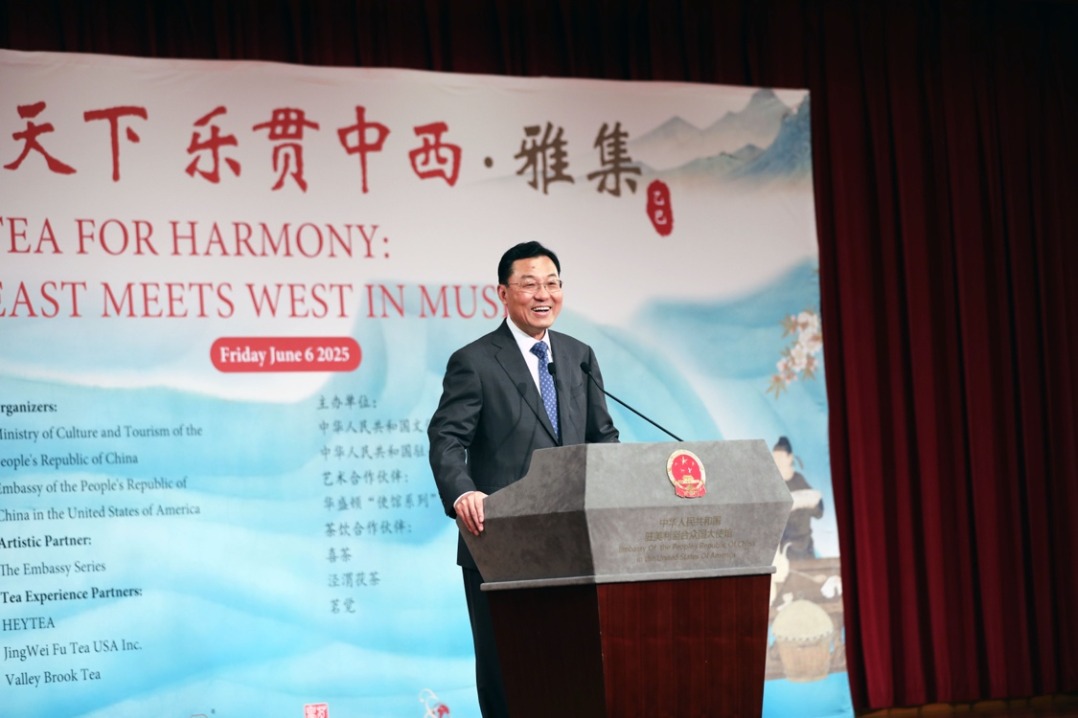Lessons from Japan's 'Lost Decades': An underdog in the era of innovation and entrepreneurship
By Zhou Muzhi | china.org.cn | Updated: 2023-09-13 20:19
Editor's note: The ongoing discussions about Japan's "Lost Decades," a period of prolonged economic stagnation spanning 30 years, have sparked debates on whether Japan indeed lost momentum for three decades, the reasons behind it, and the potential takeaways for China. In June 2023, Professor Zhou Muzhi from Tokyo Keizai University delivered a lecture in Shanghai, offering a novel and comprehensive perspective on how Japan missed out on the prosperity driven by Moore's Law. The second part of his lecture addressed Japan's failure to seize the era of innovation and entrepreneurship.
1. The era driven by Moore's Law
Although I am an economist, I have an engineering background with a bachelor's degree in automation. Moore's Law is one of the fundamental concepts in automation. Alvin Toffler's "The Third Wave" back in the early 1980s filled me with excitement. He depicted numerous scenes in the future Information Age and proclaimed himself a "futurist." Toffler's audacity was backed by his predictions, fueled by the source of imagination: Moore's Law. Decades later, many of Toffler's prophecies have become reality.
Moore's Law, coined in 1965, posited that the number of transistors on a semiconductor chip would double every 18 months, leading to a halving of semiconductor prices. This trend opened up immense possibilities fueled by imaginations.
After 1970, as semiconductors evolved in accordance with Moore's Law, they gave rise to numerous products and services. From hardware like computers, smartphones, and iPads to network services like email, web pages, and search engines, as well as social media platforms like Facebook, WeChat, and Twitter, streaming services like YouTube, Netflix, and TikTok, e-commerce platforms like iTunes, Amazon, Taobao, and SHEIN, digital currencies like Bitcoin, AI applications like ChatGPT and autonomous driving — the proliferation of products and services has been unprecedented and continues to evolve.
It's worth noting that many of these products and services are provided by sci-tech companies. It's these nascent enterprises that have led the global transformative development over the past three to four decades. I define this phase of human development driven by the evolution of semiconductors as the "era driven by Moore's Law."
2. L-shaped development model
NVIDIA's shares have surged this year and surpassed Intel and TSMC in market value, catapulting into the top 10 globally. The trajectory of NVIDIA's market value resembles an L-shaped curve, having endured an extended period of low stock value before skyrocketing. Let's term this type of development "L-shaped development."
Why could NVIDIA persist for so long without giving up? Co-founder Jensen Huang has attributed NVIDIA's persistence to Moore's Law. He knew that his GPUs would become faster and cheaper over time, and even if there weren't customers now, he believed there would be a vast market.
Being imaginative is a shared trait among sci-tech companies, and the L-shaped development is built upon the imagination of the future.
For individuals or enterprises aiming to succeed in the era driven by Moore's Law, imagination is crucial. If a country wants to win, it requires a grand macroscopic imagination. Yet, attempting to eliminate all unpredictability through risk-averse management stifles imagination. In the era driven by Moore's Law, eliminating risk and imagination might equate to squandering opportunities.
Emphasizing risk avoidance could be considered an inherent toxin for an island nation like Japan. Japanese society emphasizes stability and tradition, with a strong aversion to risks. To flourish with the L-shaped development is challenging amid such a social mentality. The collective risk-averse thinking mentality clashes with the rapid changes of the world under the influence of Moore's Law.
3. Three key elements of L-shaped development
In 2020, Tokyo Keizai University celebrated its 120th anniversary with an academic symposium. The university is closely connected with China. During the anniversary forum, I invited TBS Television's Chairman Shinji Takeda and one of the founders of NTT DoCoMo, Masatoshi Suzuki, to discuss the digital transformation of industries.
We talked about Over-the-Top (OTT) streaming's impact on movies and television. The outbreak of the COVID-19 pandemic in 2020 led to the closure of movie theaters. ByteDance moved the major Chinese New Year film "Lost in Russia" to streaming platforms. This was the first time that a blockbuster film was shifted to streaming without premiering in theaters, marking a significant exemplar of commercial model innovation in China.
In the same year, Disney's blockbuster "Mulan" and Christopher Nolan's "Tenet," each costing around $200 million, directly hit streaming platforms. While these films attempted at theater releases, they eventually ended up on streaming platforms due to the pandemic. The ability of streaming platforms to handle and accommodate blockbuster films had been accelerated by the evolution of networks under Moore's Law. Just three years later, the trend of premiering major films directly on streaming platforms has become commonplace.
Represented by Netflix, streaming platforms have undergone an L-shaped development, transitioning from DVD rentals to streaming and further into content production. The company's stock experienced an extended period of stagnation before soaring.
Three crucial elements are essential for L-shaped development: imagination, leadership, and teamwork. Without these three factors, enduring prolonged periods of pain and struggle is out of the question. These three are challenging to maintain in large, bureaucratized corporations; most of the successful instances of L-shaped development occur in sci-tech companies. Only startups bosting state-of-the-art technologies have the potential to combine imagination, leadership, and teamwork.
4. Japan overshadowed in sci-tech age
In 1989, when Japan's corporations were on the crest of a wave, there was no sci-tech company among the global top 10 by market capitalization. The most technologically advanced company on the list was IBM, founded in 1911 and nearly 100 years old back then. Now, looking at today's global top 10 companies by market capitalization — Apple, Microsoft, Google, Amazon, NVIDIA, Tesla, Facebook, TSMC — 8 of them are innovation-driven companies. Among them, the oldest is Microsoft, founded in 1975, and the youngest is Facebook, established in 2004.
Over the past three decades, the dynamics of corporate competition have completely changed. The emergence of innovation-driven companies has turned them into the most influential leaders shaping and changing the world.
It is surprising that no sci-tech company made today's list of Japan's top 30 companies. The average founding year of the top 30 companies is 1919, with an average age above 100. Only one company, SoftBank, was founded after the 1980s. The company could not be considered a sci-tech company, despite its investment in sci-tech companies. Even with SoftBank included, there are only three companies founded after the 1960s.
Many of these aged Japanese corporations have become heavily bureaucratized and find it difficult to produce leaders with strong personalities and foresight.
Unlike American companies, Japanese companies do not hire professional managers to run their businesses. Instead, they cultivate executives from within. Those who have worked their way up the corporate ladder from ordinary employees to CEOs are often those who haven't made mistakes at every career stage. Such company leaders are naturally risk averse.
These aging corporations lacking strong leadership are unlikely to invest in new ventures that involve risk, and even when confronting difficulties, they are unlikely to undertake "dirty work" such as making their company slim. Nissan's revival during a management crisis serves as an example. Without the bold actions of Carlos Ghosn, including significant layoffs, Nissan's resurgence wouldn't have been possible.
5. Collapse of electronic kingdom and challenges of automotive powerhouse
Over a decade ago, I made two predictions — Japan's electronic kingdom would collapse and Japan's leadership in the auto industry would face severe challenges.
Japan was the earliest beneficiary of Moore's Law and a dominator in the electronics industry. There was a time when Japan's electronic products were a global household product and the country positioned itself as a big electronic manufacturer. In 2009, my book "Move into Cloud Era" was published. The book includes an article titled "Japan: The Collapse of the Electronic Kingdom," once published by the Global magazine, a publication of Xinhua News Agency.
Unfortunately, one of my predictions has become a reality today. Industries such as semiconductors, home appliances, computers, smartphones, LCDs, solar panels — most of Japan's former leading industries — have either dwindled or disappeared. Few people today remember that Japan was once the world's top semiconductor producer.
In March 2010, I wrote a column for the Global magazine titled "Toyota's Real Crisis," clearly pointing out that Toyota, which had reached its peak under the old industrial environment and production model, would face challenges from emerging electric vehicle manufacturers like Tesla and BYD. How to navigate the electric vehicle era would be a challenge that determines Toyota's survival.
Clearly, Toyota hasn't handled this challenge well, and it currently finds itself stuck in a dilemma. In July 2020, Tesla's market capitalization surpassed Toyota to become the world's most valuable automaker. However, Tesla's vehicle sales were only a thirtieth of Toyota's, and its revenue was just an eleventh of Toyota's. Despite being the global leader in both vehicle sales and profit, Toyota was surpassed in market value. Why? This is perhaps the most puzzling question for the Japanese to comprehend and one they are most reluctant to confront.
A decade ago, when I researched modular production methods, I contended that automotive manufacturing would one day become a supply chain based on modular production. Some Japanese scholars disagreed, stating that automotive production differed from electronics production and required more coordination. They argued that behind this coordination, there should be a high level of trust, capital convergence, and long-term personnel interactions. In other words, the Japanese-style pyramid hierarchy is most suitable for automotive manufacturing. However, Moore's Law is relentless. With the evolution of semiconductor computing power, automotive manufacturing has also evolved into an industry characterized by modular production, and the emergence of electric vehicles has accelerated the evolution.
Tesla is totally different from Toyota. After enduring prolonged sufferings, it has finally gained recognition and achieved the L-shaped development. Today, Tesla's market capitalization far exceeds that of Toyota.
The L-shaped development entails a trial-and-error phase that is quite painful, and this process can be quite prolonged. The promising future lies ahead, but when it arrives remains uncertain, leading to enduring hardship. Whether it's Tesla, BYD, NVIDIA, or Netflix, every poster child of the L-shaped development has inevitably gone through this ordeal.
However, Japan's social environment and corporate logic are ill-equipped to endure such struggles. Therefore, it's hard for sci-tech companies to achieve the L-shaped development in Japan.
As a backup to L-shaped development, Japan's unicorn companies are also few and far between. Only six of the 1,678 unicorn companies worldwide are Japanese. This number is grossly disproportionate to Japan's standing as the world's third-largest economy.
(The author is a professor at Tokyo Keizai University.)
























